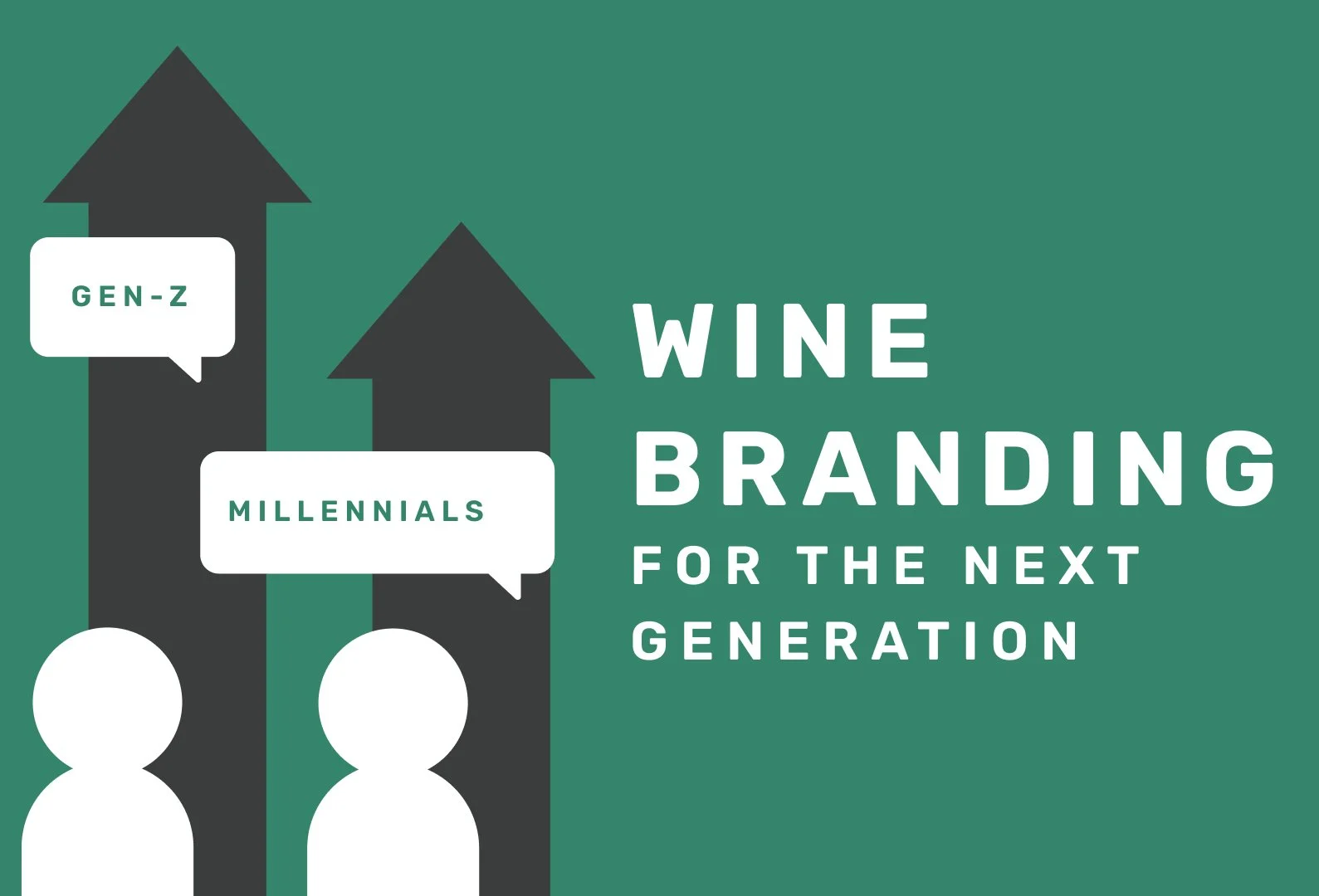Wine Branding for the Next Generation: What Works, What Doesn't
The wine industry is facing a demand reset.
For decades, wineries could count on an audience to buy based on tradition, prestige, and a deep love for the nuances of terroir. But that audience is aging out. The next generation of wine drinkers—Millennials and Gen Z—aren’t just looking for a great bottle. They’re looking for experiences, identity, and values.
This isn’t a small shift. It’s a fundamental change in how and why people buy wine. The wineries that adapt will thrive. The ones that don’t? They’ll be wondering why their sales keep slipping.
Let’s break down what matters to these younger consumers—and how wineries can shift their branding to meet them where they are.
Millennials Buy Experiences, Not Just Wine
Millennials (born 1981–1996) grew up in a world where owning things became less important than experiencing things. Travel, concerts, pop-ups, exclusive tastings, and curated events—these are the things they spend money on.
For them, wine isn’t just a bottle—it’s part of a bigger moment. They don’t just want to own great wine; they want to experience it in ways that feel unique, social, and share-worthy.
How to Brand for Millennials:
Make Membership an Experience, Not a Transaction: Don’t just sell a wine club. Sell the lifestyle of being a member—special tastings, insider content, private events, and exclusive perks that make them feel part of something bigger.
Show, Don’t Tell: A list of tasting notes won’t cut it. Use photography and video to immerse them in vineyard life, the winemaking process, and the human stories behind the bottle.
Tap Into Social Proof: Millennials trust other people more than marketing. User-generated content, influencer collaborations, and reviews drive purchasing decisions.
If your brand is still marketing wine the way it did 20 years ago—relying on scores, critics, and exclusivity for the sake of exclusivity—you’re missing them.
Gen Z is Redefining Consumption Itself
Gen Z (born 1997–2012) is different. They’re the first fully digital-native generation, and they’re rewriting the rules of how brands engage. They don’t just consume—they participate.
Unlike Millennials, who want experiences, Gen Z wants experiences with meaning. They expect brands to stand for something, whether it’s sustainability, social good, or authenticity. They’re skeptical of traditional advertising and gravitate toward brands that feel real, transparent, and values-driven.
How to Brand for Gen Z:
Showcase Sustainability: Organic farming, minimal intervention, eco-friendly packaging—Gen Z pays attention to these details. If sustainability is part of your winery’s ethos, talk about it often and transparently.
Make Your Brand Interactive: They don’t want to just drink your wine; they want to be part of the conversation. Engaging TikTok videos, Instagram Q&As, and winemaker takeovers make them feel like insiders.
Authenticity Wins: Gen Z can smell corporate speak a mile away. Brands that try too hard to be “cool” fail. Keep it real. Show the real people behind the wine, the real process, the real moments—not polished perfection.
For Gen Z, it’s not about “What’s in the bottle?” It’s about “What does this brand represent, and do I align with that?”
Where Wineries Go Wrong
Talking About Themselves Too Much: “We’ve been making wine since 1895.” That’s great. But younger buyers care more about how your brand fits into their life than about your past.
Ignoring Mobile and Social-First Marketing: Millennials and Gen Z don’t read wine magazines. They don’t really browse desktop websites. They find brands through social, search, and word-of-mouth online.
Thinking “Luxury” Means Unapproachable: Younger buyers will pay for premium wines—but they want the experience to feel welcoming, not pretentious.
The wineries that embrace approachability, experiences, and values-driven branding will win over these generations. The ones that cling to outdated marketing will struggle.
Key Takeaways
Millennials buy experiences. Make your wine club, events, and content something they can engage with—not just subscribe to.
Gen Z buys meaning. If your brand has a mission (sustainability, social impact, craftsmanship), amplify it.
Social proof and authenticity are everything. Glossy perfection is out; real, unfiltered content is in.
Mobile-first is mandatory. If your website, checkout, and marketing aren’t seamless on mobile, you’re invisible to younger buyers.
Final Thoughts
The wine industry is in transition. The old ways of marketing—relying on critics, prestige, and exclusivity—are fading. The future belongs to wineries that understand what younger buyers actually want: connection, values, and experiences that go beyond the bottle.
This isn’t a minor shift. It’s a complete reset in how wineries need to engage with their audience.
The good news? The brands that get it right will build loyal, engaged, next-generation wine drinkers—the kind who stick around for decades. Find out more on reaching the next-generations.
The question is: Is your winery ready?


